TRAINING
Airports subject to Canadian Aviation Regulations must provide wildlife management training to employees assigned to that task, at least every 5 years.
FALCON provides training in wildlife management that meets the regulatory requirements of Transport Canada and ICAO. These courses have been offered since 1998.
The scope of our training courses responds to all types of airports (international, regional, military, etc.), and various types of professionals such as firemen, supervisors, airport managers, air-traffic controllers, maintenance crews, pilots.
Find more details here : Training Information Document (PDF, 1 MB)

WILDLIFE MANAGEMENT PLAN
The keystone of all wildlife management programs in any airport is the establishment of a Wildlife Management Plan. Canadian Airport Regulations and ICAO standards, which apply to the vast majority of airports, require the integration of a Wildlife Management Plan in airport operations. The goal of an Airport Wildlife Management Plan is to promote aviation safety for passengers and flight crews by reducing wildlife hazards and associated risks to aircraft and airport operations on and in the vicinity of the airport.
AWMPs produced by FALCON are done in accordance to CAR 322.304-306 using Transport Canada TP13549, TP11500, TP8240 and TP1247 recommendations. FALCON goes even further by incorporating the latest best practices and wildlife management tools, such as our new SMS-based risk analysis. More details on our AWMP content is also available in Sections 2.4.6. and 3.4.1.
To date, FALCON has created more than 30 AWMPs, including mandatory 2-year updates and revisions, for a total of 15 airports. AWMPs produced by FALCON are done in accordance to CAR 322.304-306 using Transport Canada TP13549, TP11500, TP8240 and TP1247 recommendations. FALCON goes even further by incorporating the latest best practices and wildlife management tools, such as our new SMS-based risk analysis.
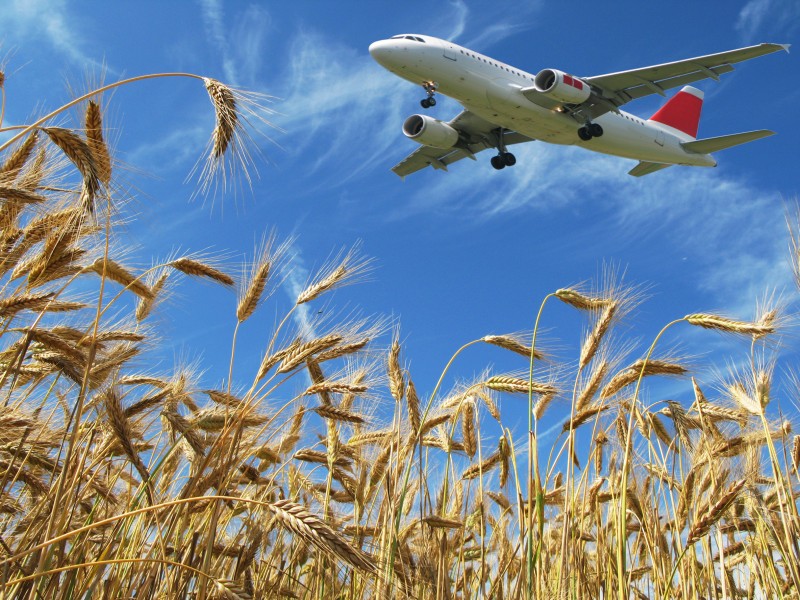
KEY PERFORMANCE INDICATOR

The establishment of key performance indicators (KPIs) is critical to help determine the need for enhancement or modification. It is also necessary because actions to reduce one wildlife hazard can result in improving conditions for some other wildlife species. When inadvertent effects such as these result in an hazard increase, this must be recognized and addressed. KPIs have been developed to allow different level of stakeholders to assess the wildlife management program.
SMS TRAINING AND AUDITING
Several laws, regulations and standards apply to the management of airport wildlife; refer to CAR 302 and 322 for more details.
As part of its airport services, FALCON is committed to be compliant with the requirements of Transport Canada. Similarly, it can support an airport manager in providing training on wildlife management and related regulations, and by performing audits on the wildlife management measures in place.
In addition, the Safety Management Systems (SMS) employed at airports may apply to wildlife management; FALCON can help you implement these SMS in your airport giving you a training adapted to your reality.
Wildlife Management Program Audits
FALCON shares its expertise with airports of any type (international, regional, military or other) who need wildlife management.
A comprehensive assessment of the existing program ensures that the airport derives the necessary benefits associated with wildlife management while meeting all regulatory requirements and integrating SMS into their operations.
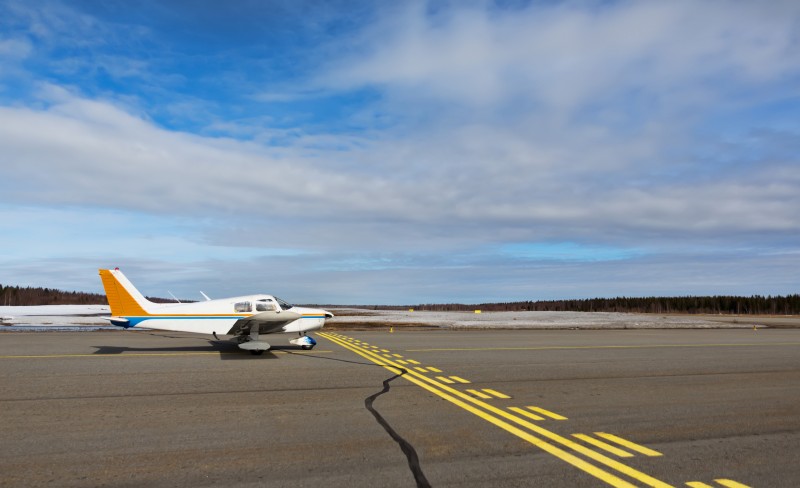
WILDLIFE MANAGEMENT AND CONTROL PROGRAM
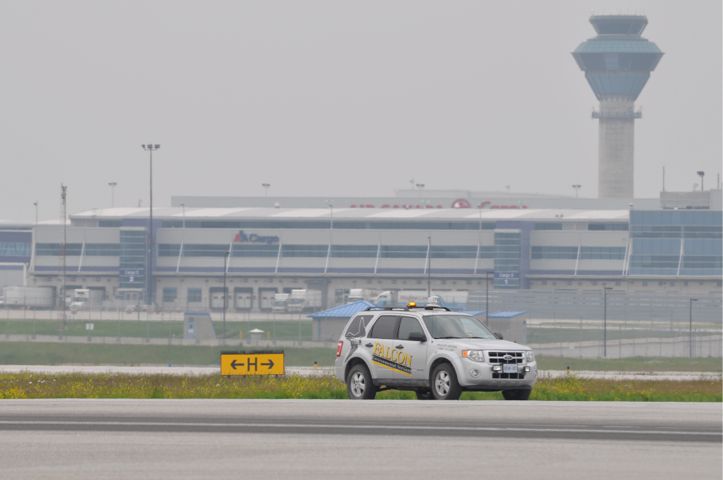
Numerous challenges are associated with the management of wildlife on an airport. In some cases, the airport may need support from external firms to assist in deploying measures and/or to meet their regulatory obligation.
With an expertise developed in the largest airports of North America, FALCON can be entrusted with all aspects of airport wildlife management and can support airports of various sizes on an as-needed basis. We employ all effective tools available in the industry, such as falconry, dogs, pyrotechnics, firearms, trapping, distress calls, radar systems, etc.
FALCON has provided integrated wildlife management programs, to North America’s largest airports, such as Toronto Pearson International Airport, JFK International, and Montreal Airport.
AIRPORT BIRD HAZARD RISK-ASSESSMENT PROCESS
The preparation of an Airport Bird Hazard Risk Assessment Process is a regulatory obligation for Canada and for airports following ICAO standards.
FALCON employs Canadian and international standards in our analysis of airport wildlife hazards. Our team has also gone a step further to develop an SMS-based approach to these risk assessments. We developed this method specifically for the needs of the armed forces and it has been adapted for civil aviation use since 2009. Our approach provides the client with an understanding of risk on a quantitative basis; allowing them to make operational decisions that consider the integration of important risk elements associated with wildlife, i.e., aircraft types present, type of birds, habitats present at the airport, seasonality of wildlife, etc.
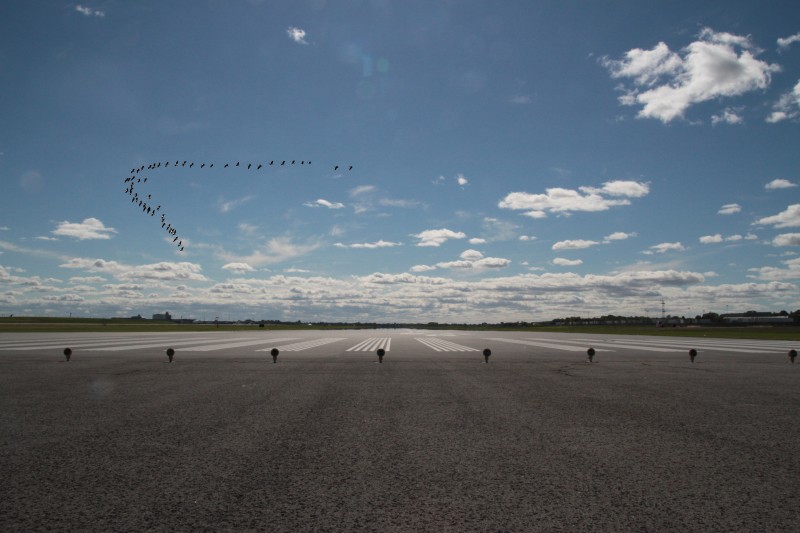
SOFTWARE
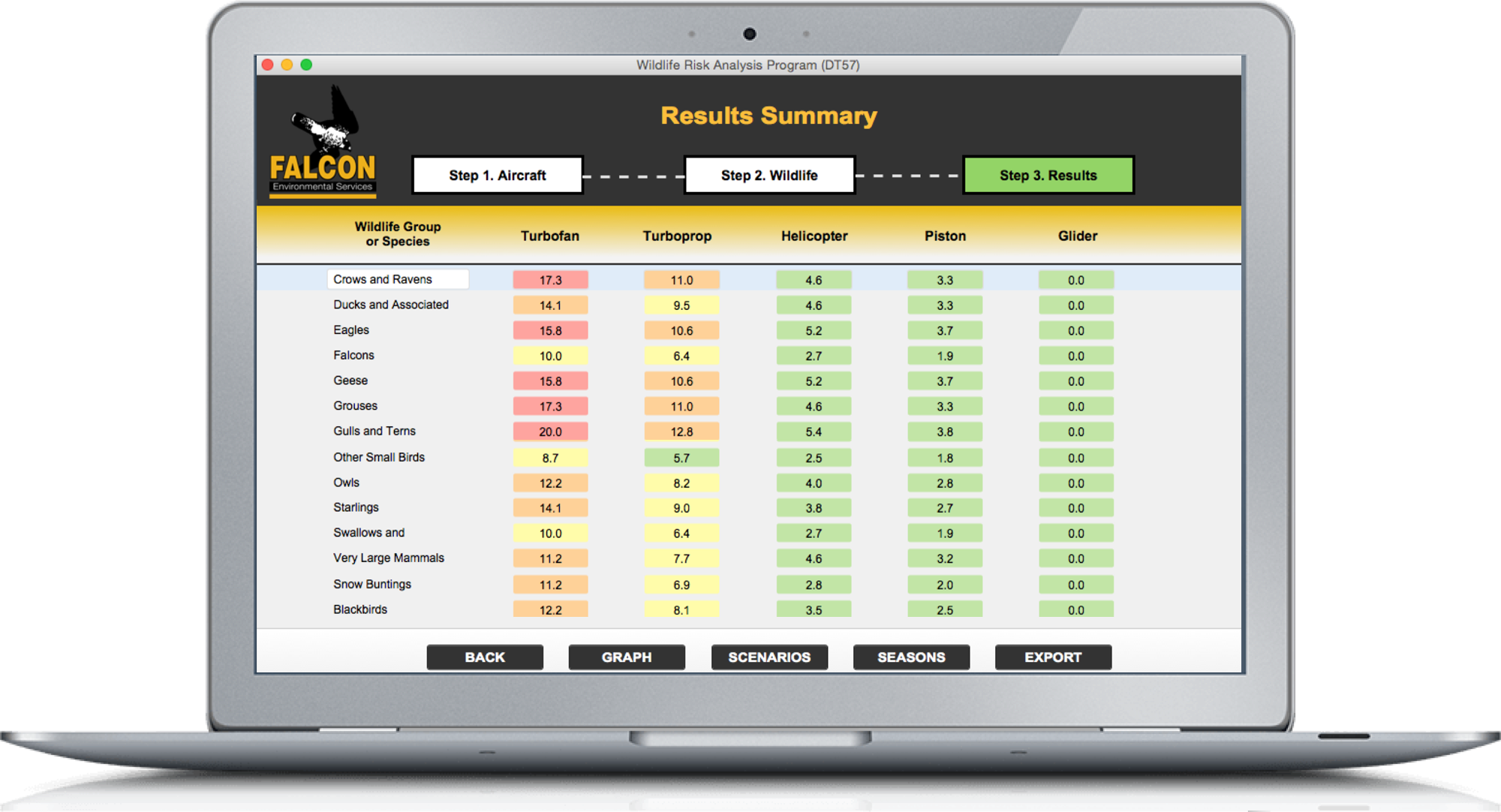
Our various software allow wildlife data monitoring and intervention entry, spatial wildlife-habitat risk map analysis, SNOWTAM production, and landfill odor and sound monitoring.
DRONE CONTROL
Unmanned aerial vehicles (or UAVs), commonly known as a drone, can cause serious damage to plane components. Although regulations as been put in place to reduce drone hazards in airports, sightings near airports and incident numbers have exploded as more and more people are flying recreational UAVs. FALCON can support airports in the development of drone management control plan. FALCON can also take actions on the field to take down hazardous drones at your airport.









